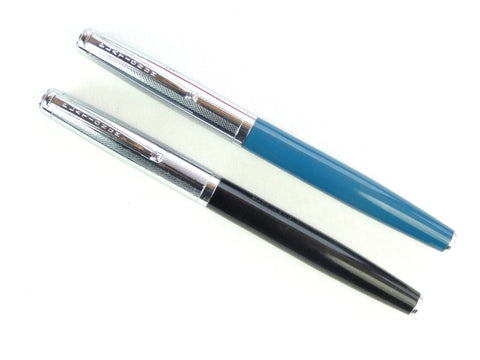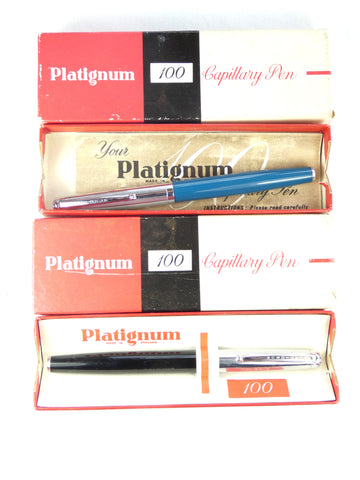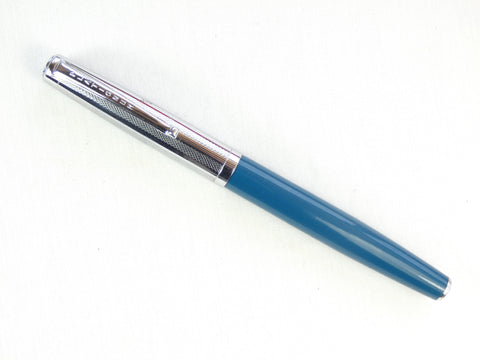Platignum 100 Capillary Filler

The Platignum 100 was Mentmore's attempt to get in early on the seemingly bright future of capillary filling pens.
Parker released the 61 capillary pen in 1956, and it was to remain in production for 13 years. In the 1950s the fountain pen industry was engaged in a full on battle against the ballpoint, perhaps the idea of a pen with no moving parts that filled itself appeared to be a good way to compete.
Shortly after the launch of the 61 Waterman introduced their own version, this time the pen filled from the 'nib end' and so avoided some legal issues regarding copyright. they called the new cappilary filler the 'Waterman X Pen'.
Mentmore also needed a capillary filler but Parker's pen loaded from the back and Waterman's loaded from the front and there was no third option. A deal of some sort was struck with Waterman which allowed Mentmore to produce a front loading capillary pen under licence. Rather than risk releasing the new pen as a Mentmore, they passed it over to the Platignum division and called it the 'Platignum 100'. The choice of a number, rather than a name, was unusual for Platignum but the number '100' sounds 'high end', and it's bigger than 61.
The Platignum 100 is quite an attractive pen, I have two of them in my collection:

I'm under no illusion about the cash value of these pens, it's just that I went through school with a succesion of Platignums and have a strange nostalgic attachment to them. I can't recall owning a hooded nib version and would not have been impressed anyway as one of the main functions of a fountain pen, at the time, was stabbing one's friends.
The pen is a decent size, mid weight, and appears to be quite well built. The heavily chromed cap has a chased pattern and is made from reasonably thick metal, it is not poor quality, by any means, and would not have been cheap to make. The barrel has a chromed end stud, strangely reminiscent of the Parker 51, as is the general shape of the barrel.

Platignum also thought that a capillary filling pen should have a hooded nib, presumably to help prevent the nib drying out and went for a design that was very similar to that used by Wyvern in their hooded pens.

One important point that Platignum ignored when they designed the pen was that, unlike the Parker 61, it was virtually impossible to flush old ink from the pen. It was therefore a 'one colour' ink system that, after first filling, would always contain some ink that would dry in time and clog the cappilary routes in the material storing the ink. I did fill my pens, and they worked well, but after more than an acceptable amount of time with a bulb, attempting to suck and blow water in and out of the pen followed by a tedious shaking procedure like a demented nurse with a stuck thermometer I gave up on the cleaning process. I'm still not sure if I had much success.
The packaging is very much of its time, and the instructions are delightfully clear.


It is interesting that there are no instructions on how to clean the pen but the leaflet does give a dire warning about the dangers of attempting to dismantle it as it is 'scientifically calculated'.
The Platignum 100, whilst not a complete disaster, was not a great success and didn't last long. It looks, and feels like a higher end pen than most Platignums, perhaps more akin to the pens bearing the Mentmore name. Any doubts that the pen was a Mentmore product are soundly dispelled by the complement slip.

So, I'm not sure whether the Platignum 100 is a good pen, a bad pen, or just a pen equivalent of an evolutionary dead end.
Nevertheless, I still think the pens have a place in the history of fountain pens and this pair will remain, idle but content, in my collection. I'm quite fond of them!
